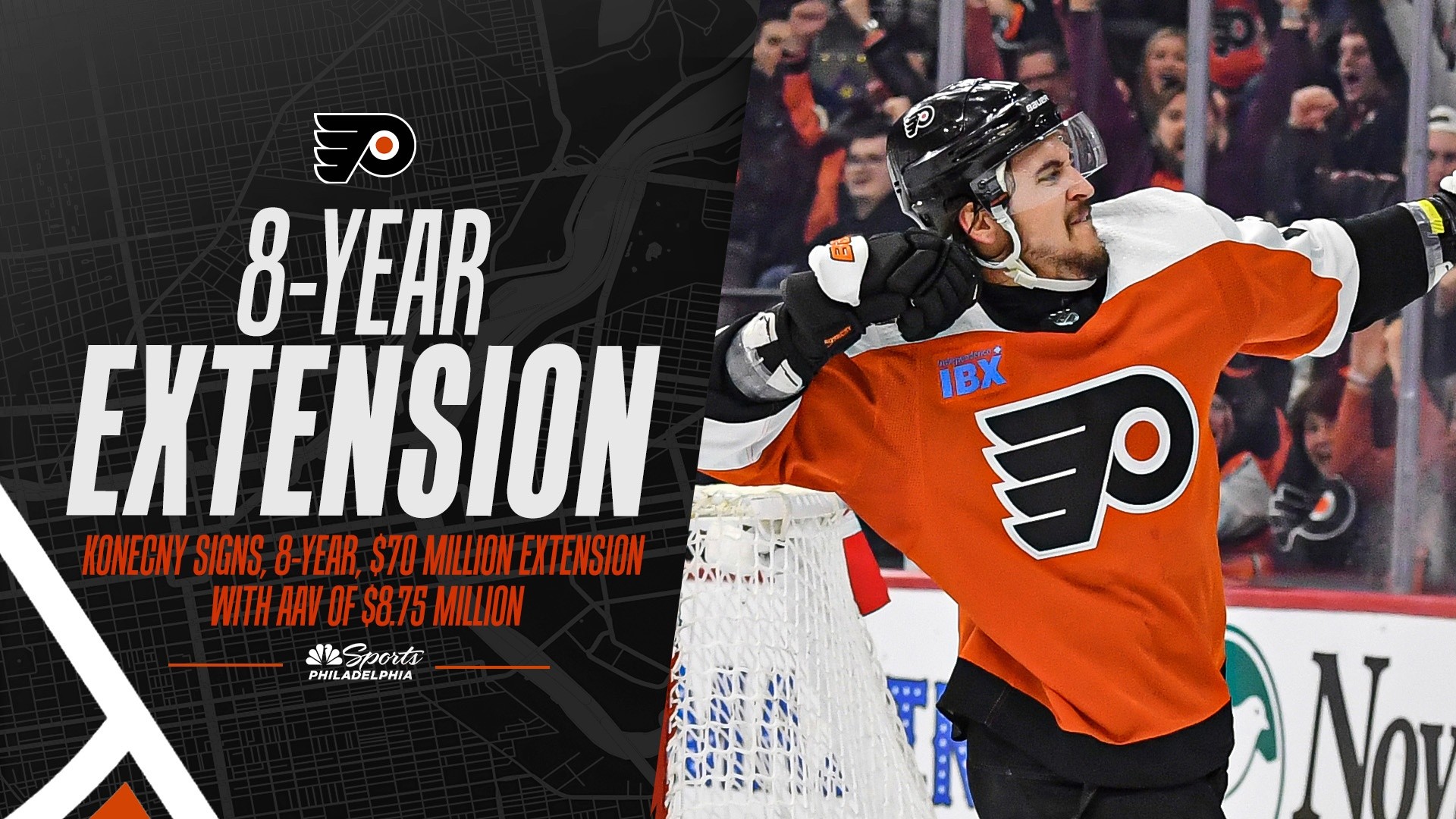With each offseason and trade deadline, the clock inevitably ticks on the trading window of Shayne Gostisbehere. The allure of Gostisbehere takes a slight, unavoidable smudge because with each season, a year of team control is lost from his team-friendly contract, and with each season, he gets older like any other player.
Young, talented players under team control with comfortable cap hits? Very appetizing to NHL general managers.
Naturally, as time passes, the Flyers will feel more pressure or have more incentive to cash in on the trade chip. Therefore, it "isn't totally shocking," as The Athletic's Pierre LeBrun reported Monday, that Gostisbehere is available for a trade.
Stay in the game with the latest updates on your beloved Philadelphia sports teams! Sign up here for our All Access Daily newsletter.
In May, we wrote about three reasons why the Flyers could be incentivized to trade Gostisbehere during the offseason or 2020-21 season. He has been a buzzed-about trade candidate for the past few seasons because there's a lot to like: he's a skilled, puck-moving defenseman with a prime age of 27, he had a career 65-point year in 2017-18 and he's under contract for the next three seasons on a $4.5 million cap hit.
For the Flyers, things have changed since Gostisbehere erupted with those 65 points (13 goals, 52 assists), the fourth most among NHL defensemen that season. The organization is now considerably deeper and younger on the blue line, with Travis Sanheim's strides and Philippe Myers' arrival, along with some prospects getting closer to knocking on the door (i.e. Egor Zamula and Cam York, to name a few).
Simultaneously, Gostisbehere has endured setbacks, this season being the most difficult as he had to undergo arthroscopic surgeries on both of his knees in 2020 and finished the regular season with 12 points (five goals, seven assists) through 42 games. He felt and looked more like himself over five games in the NHL's return-to-play 24-team tournament.
"I think it’s pretty well-documented, Shayne spoke to this at the end of year, I don’t think he felt right for a lot of the year physically," Flyers general manager Chuck Fletcher said Tuesday in a video interview. "He took the time to correct an issue he had, a lower-body issue that he had. I think when he came back into the bubble, he was skating better than he had all season, he had the pop back in his skating stride, he was able to, I thought, cut quicker, turn quicker, he had a little bit more explosiveness, which for Shayne, is critical to his game.
NHL
"I think it was a frustrating season in that I don’t think physically he was at the level he wanted to be at until the end. Look, Shayne’s 27 years old; there are not many 27-year-old defensemen in the league that have had 60-point seasons. Obviously he hasn’t been at that level for a couple of seasons, but I know physically he feels this is the best he has been in a couple of years. I know he’s looking forward to showing everybody that he can get back to being the player that he was a few seasons ago."
The Flyers won't just give away Gostisbehere. They've been willing to take calls on him, but they clearly like and know his ability. Could they have greater reason to be active and open in finding a trade partner who wants to improve on the blue line by offering Gostisbehere a fresh start? Sure, it just makes some more sense now for the aforementioned reasons and when you consider the current economic climate of the league. The salary cap floor, which typically climbs each year, will remain flat at $81.5 million in 2020-21 and potentially stay flat for seasons to follow. Across the NHL, trades now could be a more flexible avenue to not only fill a team need but also shed cap for future seasons.
"There are a lot of teams right now that don’t have cap space already," Fletcher said earlier this month. "The teams that do have cap space over the next three years, every one of them has some young players that are going to get raises, potentially big raises. Teams that spend money on UFAs this summer and have young players aren’t necessarily going to have any more money in Year 2 and Year 3.
"Eventually, by the time you get to Year 3, how much liquidity is there really going to be in the system? It’s going to be tight for everybody. Does that mean prices come down on free agents? Does that encourage more hockey trades, dollar-for-dollar trades? Possibly. I think that from a logical standpoint, that could make sense, but we’ll see."
And we'll see about Gostisbehere. At this point, a trade or no trade won't be incredibly surprising either way.


